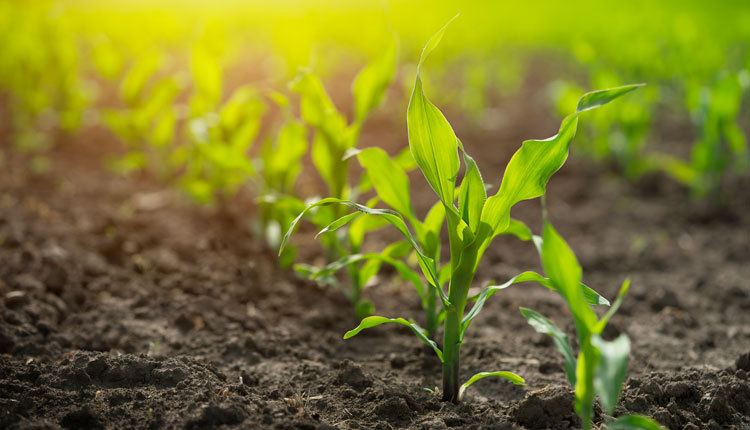
Roughly two months into the 2025 growing season and fresh off a few days of working with colleagues and dairy producers in western New York, Mother Nature has already forced in-season adjustments for many farms. Our understanding of “normal” is often locally or regionally based. The 2025 normal for the Midwest at this point is anything but normal for those dairy farming to the east and south.
The stark contrasts between those farming in the Upper Midwest and those farming to the east stem from a consistently different weather pattern that kicked off this year. The precipitation map for the past 60 days below shows the relative percentage of precipitation compared to long-term norms, and offers us a clear indication of two very different weather patterns.
Talking with growers and producers in the Midwest and my agronomy colleagues, the planting season couldn’t have gotten off to a better start. Then draw a line between Missouri and Toronto, and a complete contrast is evident. Working with producers in New York this past week, I’ve realized manure is still being hauled, corn is being planted, and first crop continues to be harvested across many acres. For the readers out East underneath the wetter weather patterns with delayed or prevented planting situations and delayed first cutting - stay the course, and recognize you are not alone as the entire region is under a similar start to the season.
Eastern region adjustments
Later cut forage will have more, woody fiber, and less protein; however, we can offset the suboptimal quality with a more aggressive management for second through fourth or fifth cuttings. First, make note of where the suboptimal haylage is stored on your dairy and keep it separate. Avoid piling better feed on top of it later this year, assuming we can more aggressively time our subsequent cuttings. Throw the calendar out the window to time the subsequent cuttings. Instead, team up with your agronomist to walk fields, and, more closely, monitor grass and alfalfa plant maturity, then time your cuttings to harvest less mature forage to offset the first-cutting haylage.
If your farm wasn’t able to get all the manure hauled, it’s okay to haul manure out after the haylage harvest on these acres. Although, try and keep manure applications to the 48-hour window after chopping, as the grass or alfalfa will immediately begin regrowth. Applying manure to a regrowing grass or alfalfa stand, with new green tissue above ground, will inoculate these plants with undesirable bacteria and can create big issues later on. Try to avoid this situation.
For later planted corn, recall my article from earlier this year regarding logging your planting dates. Having detailed records for silage corn planting date, and then taking note of heat units and moisture when the corn is growing through V5 to V7 growth stages is going to be helpful for later season harvest and management considerations. If your corn is growing in these stages with warm weather with adequate moisture, we’re more than likely going to have less digestible stover around harvest. We can consider harvesting a bit earlier, high chopping and a shorter theoretical cut length to manage around less digestible fiber. Maintaining a fully healthy plant up to harvest will be helpful as well, to maintain more digestible fiber. Dying and necrotic tissue is far less digestible in my experience. Nitrogen (N) treatments may be helpful to strategically target N delivery following a wetter start to the year.
The growing season has started exceptionally well for many growers in these regions. In fact, corn planting and germination progress for the U.S. is well ahead of five-year trends. Fieldwork, planting, and first crop haylage are all completed for many dairy forage growers in these regions. The conditions were so favorable that a colleague of mine in the seed industry commented that he’s getting more calls from growers and clients, which he attributed to the growers having adequate time this year to drive around and monitor the crops. In years past, we’ve been too busy to spend the time closely looking at fields at this point in the year.
If your corn is slightly yellow to start the year, consult with your agronomist. This observation is likely fairly normal and your corn will come through strongly. In season plant tissue testing can help balance your crops’ nutrient needs if N or other nutrients are deficient. Overall, put your mid-season fertility and crop protection plans into action as we proceed into the critical crop quality growth stages ranging from V5 to R1.
A stark contrast
Much like prior years and seasons, this year is starting off with a bang. This bang can be interpreted in different ways, with a clear contrast driven by above average rainfall and the untimely nature of the rains for many growers. We’ll endure, thanks to strong-minded producers, excellent seed genetic potential and stress tolerance, and experienced advisers helping us throughout the season. Don’t hesitate to shift your strategy already, and think of this season unfolding like a four-quarter football game. We’ve just completed the first quarter, and there’s quite a bit ahead of us as we look to come out on top again this year!
 U.S. NOAA precipitation map, % relative to long-term normals, over the past 60 days.
U.S. NOAA precipitation map, % relative to long-term normals, over the past 60 days.







